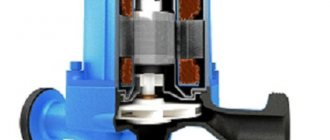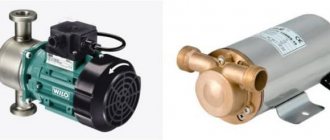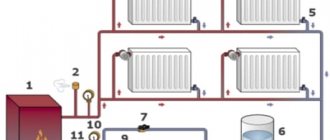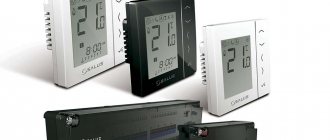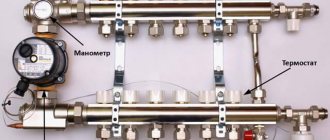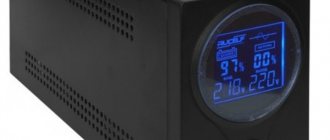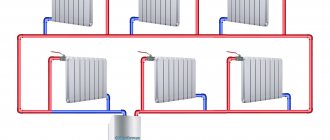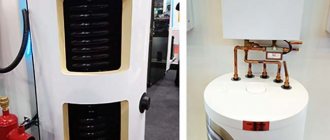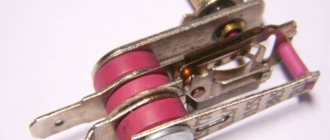How to connect the circulation pump to electricity?
The circulation pump is an important element of modern heating systems. It is needed for forced circulation of water in the heating system, which allows you to save up to 30% on heating private houses and cottages. The savings lie in the fact that the coolant quickly passes through the pipes, as a result of which the water does not cool down so quickly and, accordingly, there is no need to heat it very much. This article will discuss the correct connection of the circulation pump to the electrical network. Diagrams and video instructions will help you carry out electrical installation yourself without errors!
What is important to know?
The wiring diagram and methods of connecting a device such as a circulation pump to electricity can have different designs. The choice of a specific option is determined by the characteristics of the heated object, as well as the location where the device is located. There are two ways to connect it:
- direct connection to a 220 V power supply;
- connection to an uninterruptible power supply, which in turn is connected to a 220 V or 220/380 V network (in the case of a three-phase UPS).
By choosing the first method, the consumer risks being left without heating in the event of a prolonged power outage. This option can be considered justified only if there is a high degree of reliability of power supply, reducing the likelihood of a long power outage to a minimum, and also if there is a backup source of electrical energy at the site. The second method is preferable, although it requires additional costs.
Connection methods
Connection to the electrical network using a plug and socket . This method involves installing an electrical outlet in close proximity to the place where the circulation pump is mounted. Sometimes they can be supplied with a connected cable and plug included, as in the photo:
In this case, you can simply plug the device into the mains using an outlet located within reach of the cable. You just need to make sure there is a third, grounding contact in the outlet.
If there is no cord with a plug, they need to be purchased or removed from an unused electrical appliance. You should pay attention to the cross-section of the cord conductors. It should be between 1.5 mm2 and 2.5 mm2. The wires must be stranded copper, ensuring resistance to repeated bending. The cord with a plug for connecting electrical appliances to the network is shown in the photo below:
Before connecting the circulation pump, you need to find out which of the three wires of the cord is connected to the ground pin of the plug. This can be done using an ohmmeter, while at the same time checking the integrity of the remaining wires.
Open the terminal box cover. Inside the box there are three terminals designed to connect the device to the network, marked as in the picture:
We unscrew the clamp of the cable coupling (in the first photo it is a plastic nut into which the cable is inserted), put it on our cord, and insert the cord into the coupling. If there is a cable tie inside the box, thread the cord through it. We connect the ends of the cord wires, previously stripped of insulation, to the terminals.
The wires connected to the plugs of the plug should be connected to the L and N terminals (don’t be afraid to mix them up, this is not critical), the wire of the grounding contact of the plug should be connected to the PE terminal (but you can’t make a mistake here). The instructions supplied with the product prohibit its operation without protective grounding. Next, tighten the clamp (if any), tighten the cable sleeve clamp tightly, and close the terminal box cover. The pump is ready to be plugged into the mains.
Fixed connection. The connection diagram for the circulation pump to the electrical network with grounding is provided below:
The requirements for the wire cross-section here are the same as in the previous version. The cable for this installation can be used either flexible or inflexible, copper, VVG brand, or aluminum, AVVG. If the cable is inflexible, the installation should ensure that it does not move. To do this, the cable along the entire route is secured with clamps.
In this option, a residual current device (differential circuit breaker) is used. Instead, you can use a regular single-pole circuit breaker, passing only the phase wire through it. If the machine is installed in a panel where there is a PE bus, then the cable from the pump to the machine must be three-core. If there is no such bus, the PE terminal should be connected to a grounding device. This connection can be made with a separate wire.
Separately, I would like to consider such an installation option as connecting the pump to the UPS. It is the most preferable and ensures the independence of the heating system from power outages. The connection diagram of the circulation pump to the uninterruptible power supply is provided below:
The power of the UPS should be selected based on the power of the pump motor. The capacity of the battery is determined by the estimated time of autonomous power supply of the circulation pump, that is, the time when the power supply is turned off. We talked about how to choose a UPS for a boiler in a separate article. Requirements for cable cross-section, as well as the presence of protective grounding, apply to all connection options.
Finally, we recommend watching video instructions for connecting various pump models to the electrical network:
Connection diagram of the circulation pump to the thermostat
So we looked at how to properly connect the circulation pump to the electrical network. The diagram and video examples helped to consolidate the material and clearly see the nuances of installation!
It will be useful to read:
Source: https://samelectrik.ru/kak-podklyuchit-cirkulyacionnyj-nasos-k-elektrichestvu.html
Criteria for selecting a UPS for a circulation pump
Voltage and power
The vast majority of pumps for domestic autonomous heating systems are single-phase devices with low power consumption (from several tens to several hundred watts). Thus, single-phase UPSs of appropriate power are suitable to power the pump motor.
However, when choosing an uninterruptible power supply, you should definitely take into account the short-term, but rather high starting currents of the pump motor, which can exceed its rated power consumption by 3-5 times. Considering the economical consumption of modern circulation pumps, in most cases it will be quite sufficient to use a UPS with a capacity of 500-1000 VA.
Battery life
In the UPS operating manuals, manufacturers indicate the value of this characteristic at full load. Obviously, the actual battery life depends on the power consumption of the pump motor and the capacity of the batteries used.
Modern UPSs with built-in batteries, as a rule, have the ability to increase capacity (and, accordingly, battery life) by connecting additional external batteries.
Models that do not have standard batteries at all will be more preferable in terms of selecting the required battery capacity. Equipped with more powerful chargers, such UPSs can work with external batteries of increased capacity, providing the necessary battery life for the uninterruptible power supply.
Output waveform
The ideal voltage for powering any load is a sinusoidal voltage or one with a curve as close as possible to a sinusoid. However, often at the output, the UPS inverter in autonomous mode forms, instead of the correct one, an approximated (stepped) sinusoid or even a meander (a periodic rectangular signal in each half-cycle of the sine graph). This waveform, with its strong sinusoidal distortion, is particularly unfavorable for the AC supply voltage of electric motors and power transformers.
The operation of a circulation pump in a network with a signal such as a modified sine wave leads to unacceptable heating of the magnetic circuit of the stator and rotor due to the occurrence of additional losses and eddy currents in them. This results in reduced service life or damage to the pump motor insulation and a high risk of premature failure.
Therefore, when choosing a UPS for a circulation pump, it is very important to pay attention to the output signal form stated in the manufacturer’s specifications. To power waveform-sensitive electric drives, it must be an ideal sine wave.
UPS type
Important technical characteristics that must first be taken into account when choosing the type of uninterruptible power supply to power the circulation pump are the speed of transition to autonomous operation and the shape of the output signal.
Devices with the best combination of such characteristics are double conversion UPS (online topology) and some line-interactive type models - their use for powering pumps is less preferable for a number of reasons.
Offline (or backup) UPSs, usually with a square wave output signal (or, at best, a highly modified sine wave), fundamentally cannot be considered as suitable power sources for electric motors (in our case, circulation pumps).
The most successful choice of the presented types of UPS will certainly be online topology devices. In addition to an ideal sine wave at the output and zero transition time to offline mode, the use of double conversion devices has the following advantages over line-interactive UPSs:
- a “pure sine” signal form is provided at the output both when the load is powered from the mains and in stand-alone mode (from the battery);
- constant stabilization of the network voltage and current frequency in combination with continuous filtering of high-frequency interference in the supply network;
- very efficient operation in networks with large dips and frequent voltage drops without switching to autonomous mode;
- possibility of connecting external batteries;
- the presence of a through zero for the correct operation of phase-dependent boilers;
- the ability to perform a “cold start” - starting the pump in the absence of voltage in the supply network (in autonomous mode).
How to choose and install a heating pump in a private house
The circulation pump is powered. The connection is standard. It is recommended to install a separate power supply line with a surge protector.
To connect, you need to prepare 3 wires - phase, neutral and ground. You can choose any of the connection methods:
- through a differential machine device;
- connection to the network together with an uninterruptible power supply;
- power supply to the pump from the boiler automation system;
- with thermostat regulation.
Which machine should I install on a gas heating boiler?
Calculation of the electrical power of the heating system is necessary for the correct selection of a voltage stabilizer or uninterruptible power supply for organizing an effective power supply system. The main electrical consumers of the heating boiler are the built-in circulation pump, air injection fans, and the boiler control system.
To calculate the power of a voltage stabilizer and an uninterruptible power supply, you need to know:
- electric power of the heating boiler;
- electrical power of external circulation pumps;
- electrical power of additional equipment.
Electric power of Bosch wall-mounted boilers
The electrical power of a Bosch wall-mounted boiler is usually in the range from 100 to 200 W.
Bosch wall-mounted boiler power table
| Name of gas boiler | Power by heat | Electric power | |
| 1 | Bosch WBN6000-24C | 24 kW | 150 W |
| 2 | Bosch ZSC 35-3 MFA | 33 kW | 160 W |
| 3 | Bosch WBN6000-18C | 18 kW | 130 W |
| 4 | Bosch ZSA 24-2 | 24 kW | 130 W |
| 5 | Bosch ZWB 28-3 | 28 kW | 125 W |
UPS models
Energy PN-1000 is a powerful source of backup power. Thanks to the built-in stabilizer, the device provides the rated output voltage when the mains voltage changes within the range of 120-275 volts. The smooth sine waveform is ideal for powering a reactive inductive load, such as a heating system pump motor. The energy of the PN-1000, together with the Delta DTM 12100L 100A/h battery, provides uninterrupted power for a 150W heating pump for 8 hours. The device has a built-in network noise filter, information display and RS-232 interface.
You can find this and other voltage stabilizers for heating systems from the Energia company on the website of the official representative of the company VoltMarket.ru.
The compact emergency power source Teplokom 222/500 is designed for use in gas heating systems. This simple device with a single-phase relay-type stabilizer ensures operation with a load not exceeding 230 W.
The universal stabilizer Skat ST 1515 provides a voltage of 220 V with network fluctuations from 145 to 260 V and a frequency of 50 Hz ± 1%. If the voltage value exceeds the specified parameters, the load will be turned off automatically.
Let's sum it up
Based on the operational requirements for electric motors of heating system pumps, the UPS must provide the following parameters:
- Voltage shape – smooth sinusoid;
- Power reserve – at least 20%;
- Automatic load shedding;
- Minimum switching time to reserve.
In addition, the device must operate in a certain temperature range and have a device for indicating modes and physical quantities.
With this they read:
Voltage stabilizers for the home: reviews, which one is better and what criteria to use to make a choice
Voltage stabilizer for a 220V cottage: selection criteria and types
Choosing an electromechanical voltage stabilizer: features, advantages and disadvantages
Voltage stabilizer for a gas boiler: types, selection criteria and power calculation
Did you like the article? Share with friends on social networks!
How to install a circulation pump
Circulation pumps are installed in heating systems with forced or natural circulation. It is needed to increase heat transfer and to be able to regulate the temperature in the room. Installing a circulation pump is not the most difficult task; if you have a minimum of skills, you can do it yourself, with your own hands.
What is a circulation pump and why is it needed?
A circulation pump is a device that changes the speed of movement of a liquid medium without changing pressure. In heating systems it is installed for more efficient heating. In systems with forced circulation it is a mandatory element, in gravity systems it can be installed if it is necessary to increase the thermal power. Installing a circulation pump with several speeds makes it possible to change the amount of heat transferred depending on the outside temperature, thus maintaining a stable temperature in the room.
